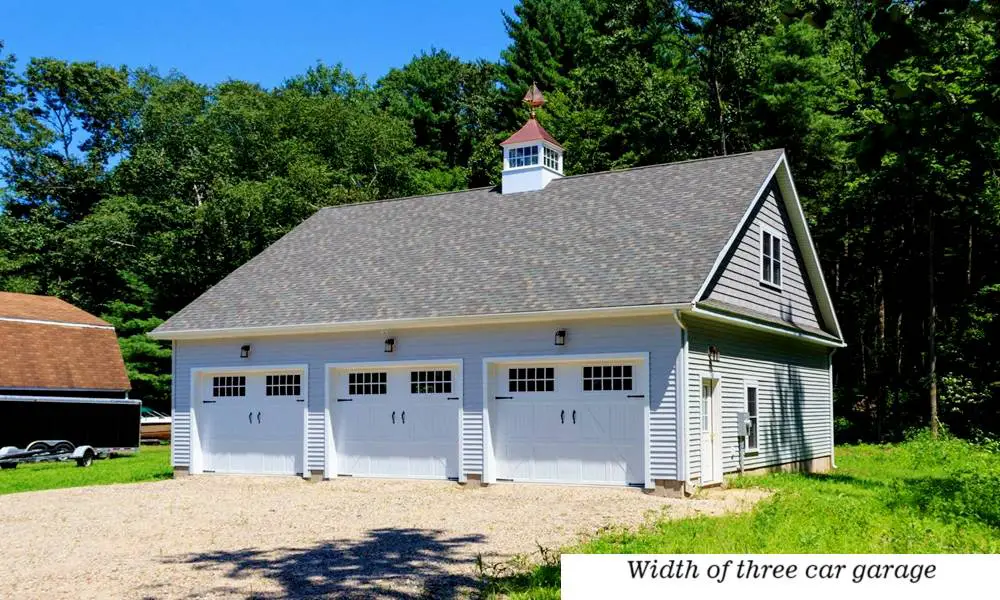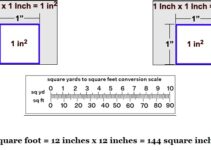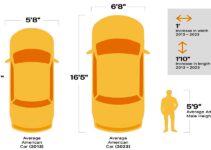Width of Three Car Garage

When planning for a new garage or renovating an existing one, one of the crucial decisions you’ll need to make is determining the width. The width of a three-car garage is not a one-size-fits-all concept; it varies based on several factors that cater to individual needs and preferences. Let’s delve into the considerations that influence the width of a three-car garage and explore common width options available.
Factors Influencing Garage Width
Vehicle Size
The size of your vehicles plays a significant role in determining the width of garage. If you own larger vehicles such as trucks or SUVs, you’ll need a wider garage to accommodate them comfortably. Consider measuring the dimensions of your vehicles to ensure they fit well within the garage space without feeling cramped.
Storage Needs
Apart from parking cars, many homeowners use their garages for storage purposes. Whether it’s storing tools, sports equipment, or seasonal items, incorporating storage solutions into your garage requires extra space. Factor in the additional width needed for shelves, cabinets, or any other storage systems you plan to install.
Accessibility
Another critical factor to consider is the ease of maneuvering vehicles in and out of the garage. Adding extra width provides more comfortable maneuvering space, reducing the risk of accidentally scraping or denting vehicles while navigating tight corners or narrow passages.
Local Regulations
Before finalizing the dimensions of garage, it’s essential to check local building codes and regulations. Some areas may have specific requirements regarding the minimum size of garages, including width. Ensure that your planned dimensions comply with these regulations to avoid any potential legal issues in the future.
Common Three-Car Garage Widths
Minimum Width
The minimum width for a three-car garage typically ranges around 30 feet. This width allows for tight parking of three smaller cars with minimal storage space. While it may suffice for basic parking needs, it may feel cramped, especially if you have larger vehicles or require additional.
Standard Width
A standard three-car garage width falls within the range of 32 to 36 feet. This width offers more comfortable parking space for three vehicles while still providing some room for storage solutions. It strikes a balance between functionality and space efficiency, making it a popular choice for many homeowners.
Larger Width
For those with larger vehicles, multiple cars, or extensive storage requirements, opting for a garage width of 40 feet or more is recommended. This provides ample space for maneuvering large vehicles, parking multiple cars side by side, and incorporating various storage options without feeling cramped or overcrowded.
Considerations for Choosing the Ideal Garage Width
Choosing the ideal width of a three-car garage hinges on several factors. Here’s a breakdown to help you make an informed decision:
Vehicle Size
- Standard cars: If you have standard-sized cars (e.g., sedans, hatchbacks), a minimum width of 30 feet will suffice. However, tight maneuvering might be necessary.
- Larger vehicles: Consider 32-34 feet if you own SUVs, trucks, or vans. This allows for comfortable parking and opening doors without squeezing.
- Mixed fleet: If you have a mix of standard and larger vehicles, 36 feet is a good compromise.
Storage Needs
- Minimal storage: A 30-foot width might work if you only need space for basic tools and supplies.
- Moderate storage: Opt for 32-34 feet to accommodate shelves, cabinets, or equipment with comfortable car parking.
- Extensive storage: Consider 36+ feet for workshops, hobby areas, or storing motorcycles/lawnmowers alongside cars.
Accessibility and Functionality
- Maneuvering: Wider garages (34+ feet) offer easier maneuvering, especially for larger vehicles or multiple drivers.
- Workbenches: If you plan to use the garage for projects, extra width allows for workbenches without obstructing car movement.
- Walking space: Wider garages provide more comfortable walking space between parked cars and storage areas.
Local Regulations
- Check your local building codes for minimum size requirements for garages. These regulations might dictate the minimum width you can build.
Additional Considerations
- Future needs: Anticipate your future vehicle ownership or storage needs to avoid potential renovations.
- Budget: Wider garages require more materials and construction costs, so factor this into your decision.
- Property size and aesthetics: Ensure the chosen width fits well on your property without looking disproportionate.
Conclusion
The width of a three-car garage is a critical aspect of its design that requires careful consideration. By taking into account factors such as vehicle size, storage needs, accessibility, and local regulations, you can determine the ideal width that best suits your requirements. Whether you opt for a minimum, standard, or larger width, ensure that it aligns with your current needs and provides flexibility for future adjustments.
FAQs
What is the minimum width requirement for a three-car garage?
The minimum width for a three-car garage is typically around 30 feet, allowing for tight parking of three smaller cars with minimal storage space.
How much wider should a garage be for larger vehicles?
For larger vehicles such as trucks or SUVs, it’s recommended to opt for a garage width of 40 feet or more to accommodate them comfortably.
Are there any regulations regarding garage width?
Yes, local building codes and regulations may specify minimum size requirements for garages, including width. It’s essential to check these regulations before finalizing your garage design.
Can I customize the width of my garage based on my specific needs?
Yes, you can customize the width of your garage to suit your specific needs and preferences, taking into account factors such as vehicle size, storage requirements, and accessibility.
What if my garage needs change in the future?
If your garage needs change in the future, such as acquiring larger vehicles or requiring more storage space, you can consider expanding or renovating your existing garage to accommodate these changes.


